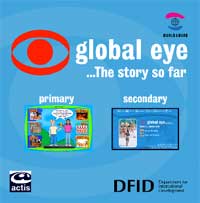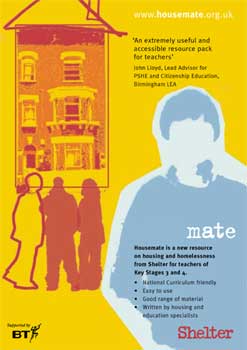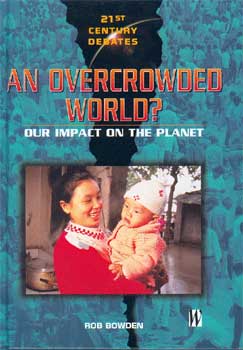|
Global Eye Secondary
Teachers' Notes Summer 2002
Introduction/Supplementary
Resources & Websites/Reviews/Credits
INTRODUCTION
Welcome to the
Global Eye website, an on-line resource based on Global Eye,
the magazine about world development written by Worldaware
for the Department of International Development (DFID).
This is the eighth on-line edition, based on Issue 18 of the
magazine.
The website won the Geographical Association's 2000-2001 'Gold
Award' for learning resources.
 Save
on internet access and download time with the CD-ROM
of www.globaleye.org.uk! Save
on internet access and download time with the CD-ROM
of www.globaleye.org.uk!
Available now, the CD-ROM allows you to access every
edition of www.globaleye.org.uk and the respective
teachers' notes up to Spring 2002 on a stand-alone
computer or school intranet. Along with Global Eye
Secondary, the CD-ROM includes Global Eye Primary
that could be used for lower secondary students.
Like the website, the 'back issue archive' contains
all the earlier editions, an index that allows users
to search for Global Eye coverage of a particular
developing country or development theme, plus downloadable
PDF versions of the first ten editions of Global
Eye magazine.
The CD-ROM
is available for £15 (incl P+P) from http://www.worldaware.org.uk/(catalogue
no. PA-171)
|
|
Join the
Global Eye Correspondents Group!
If you would like a direct input into the content,
skills and presentation of future editions of Global
Eye to successfully tailor this resource to your
needs, please join us. To limit the amount of time
involved, the Correspondents Group of practising
teachers operates largely by email, and you can
contribute as much or as little as you want. If
you are interested, please contact the editor at
editor@globaleye.org.uk
|
|
SUGGESTIONS
FOR SUPPLEMENTARY RESOURCES & USEFUL WEBSITES
Since the 1994 International
Conference on Population and Development in Cairo the focus
of the population debate amongst policy-makers and academics
has shifted towards individual rights and responsibilities.
This lends itself well to the new demands of the Citizenship
curriculum, and there is greater potential for a more explicit
overlap with PHSE programmes of study.
Eye
on Brazil
For information on a range of topics written for the 11-16
age group, visit the Brazilian Embassy's website, http://www.brazil.org.uk/and
select 'Brazil in the School' from the menu on the left of
the page. The secondary section is being updated, and there
is also an interactive quiz for students, with a trip to Brazil
as the winning prize.
Visit http://www.vivabrazil.com/for
a 'virtual tour' with lots of images.
Fala Favela: life
in the community of Vila Prudente, Sao Paulo (Trócaire
1999) is a pack including 25 A5 colour photos and a variety
of imaginative activities using the photos. The pack also
includes stories about people that live in the favela, with
discussion questions and activities for each. Available from
www.worldaware.org.uk
(code PA-175) £6.95.
Visit the 'cities in
LEDCs' page of http://www.bbc.co.uk/education/gcsebitesize/geography/cities
for a case study on Rio de Janeiro that covers urban morphology,
the quality of life in Roçinha, Rio's oldest favela.
Also, a comparison of population policies in Kerala and China
is featured in the GCSE Bitesize Revision BBC TV programme
on 'Population'.
"Brazil - Country
Studies" (Heinemann 1998)
Matching syllabus requirements for 14-16 year olds, this contains
case studies and structured activities. Available from www.worldaware.org.uk
(code B-158) £8.50.
"Brazil Country
Fact File" (MacDonald Young Books 1997)
A book suitable for the library containing detailed descriptions
of Brazil backed up by facts, figures, diagrams, photographs,
maps and graphs. Themes include: natural resources, industrial
growth, environmental concerns, the economy, trade and business
developments. Available from www.worldaware.org.uk
(code B-346) £11.25.
"Brazil: Country
Profiles" (Oxfam 2000) Intended for a general audience,
this 88 page publication provides useful and interesting background
reading for teachers or as a library item for 14-18 year olds.
Available from www.worldaware.org.uk
(code no. B-155) £6.95.
"Brazil: Advanced
Case Studies" (Hodder & Stoughton 1998)
Provides topical, up-to-date and relevant case study material
on key human, physical and environmental themes. Subject areas
covered include population and urbanisation, resources management,
environmental issues, leisure and tourism and trade. The depth
of coverage and integrated questions are all suitable for
16-19 year olds. Available from www.worldaware.org.uk
(code no. B-143) £13.50.
"In search of
Eldorado" (Trócaire 1996)
Background information and activities which examine some of
the major social and economic issues in Brazil, including:
problems caused by the concentration of land ownership in
the hands of a few, the growing level of rural-urban migration
and environmental destruction. Available from www.worldaware.org.uk
(code no. B-114) £8.50.
On
Camera: Street Life
The photographs
illustrate the following:
Street children outside
a TV shop, Belo Horizonte, Brazil.
A boy playing on an escalator, Rio de Janeiro, Brazil.
Home-made shelter in London.
A boy selling a newspaper written and edited by street children,
Loja, Ecuador.
Homeless children developing basket weaving skills in the
Red Cross Street Children Centre, Maputo, Mozambique.
 "Housemate"
(Shelter 2001) is an extremely useful and accessible resource
pack aimed at Citizenship/PSHE/Geography/English for the 11-16
age group. Written by housing and education specialists, the
pack includes a teachers' guide and a 15 minute video, covering
issues such as homelessness, housing options and leaving home,
supported by background facts and case studies. "Housemate"
(Shelter 2001) is an extremely useful and accessible resource
pack aimed at Citizenship/PSHE/Geography/English for the 11-16
age group. Written by housing and education specialists, the
pack includes a teachers' guide and a 15 minute video, covering
issues such as homelessness, housing options and leaving home,
supported by background facts and case studies.
Through a range of activities based on individual, pair and
group work, the pack brings the issues to life in a dynamic
and attractive way.
"Housemate"
is available in four versions for each UK jurisdiction, including
a Welsh language version. One pack per school is available
free of charge (extra copies cost £20 plus £5
P+P) from Shelter. To order a copy, phone 0870 2416084 or
visit www.housemate.org.uk
"This City Life"
(Leeds DEC 1999) is an impressive 60 page resource pack
that focuses on the problems faced by homeless young people
in Delhi, Nairobi and Leeds, emphasising that these problems
are global. The pack includes a video of interviews with children
talking about their experiences, a set of A4 cards with 16 colour
images, information on local initiatives to help homeless young
people, and a floppy disk with classroom activities and more
case studies. Available from www.worldaware.org.uk
(code no. PA-143) £24.75.
"Developing Rights"
(Oxfam 1998): An 80 page handbook that supports teaching
about rights and responsibilities to 11-14 year olds, including
photocopiable resource pages. It includes an excellent section
(Unit 2) on street children in Brazil, and makes connections
between their situation and bullying. Strongly recommended.
Available from www.worldaware.org.uk
(code no. H-55) £12.50.
"Kids have Rights
too" is a comic (no. 1-2) written by UNICEF for lower
secondary school students. This edition features stories of
street children and child labour that would complement the
case study on pages 4-5. Copies are available free (code no.
34181) from UNICEF. Tel: 0870 606 3377; Fax: 01245 477394
or write to UNICEF, Unit 1, Rignal's Lane, Chelmsford CM2
8TU.
Materials about street
children are available from World Action, including a very
user-friendly magazine called "Footnotes" that focuses
on their campaigns to help street children. A video and A3
poster entitled, "Streets Apart" is also available.
For more details, contact World Action, Methodist Church House,
25 Marylebone Road, London NW1 5JR; Tel: 020 7467 5159; Email:
worldaction@methodistchurch.org.uk
Focus
on Population
The 2001
World Population Data Sheet contains the latest population
estimates, projections, and other key indicators for 200 countries.
You can download the data from the Population Reference Bureau's
website, www.prb.org. A wall
chart version is available (first copy free to schools, £4
each or £2.50 each for 10 thereafter) from Population
Concern, Studio 325, Highgate Studios, 53-79 Highgate Road,
London NW5 1TL; Tel: 020 7241 8500.
Visit http://www.census.gov/ipc/www/idbpyr.html
for population pyramids for any country in any year.
 "An
Overcrowded World?" by Rob Bowden (Hodder Wayland 2001)
is a recent addition to the excellent '21st Century Debates'
series that would be a valuable addition to any school library.
Using colourful illustrations and photographs, viewpoint panels
and debate panels at the end of each chapter, the book is
particularly good at examining the population versus resources
debate. Available from www.worldaware.org.uk
(code no. B-415) £13.00. Other titles in this series
available from www.worldaware.org.uk
: "Climate Change" (B-414), "Rainforests"
(B-573), "Food Supply" (B-416) and "Waste,
Recycling & Re-use" (B413). "An
Overcrowded World?" by Rob Bowden (Hodder Wayland 2001)
is a recent addition to the excellent '21st Century Debates'
series that would be a valuable addition to any school library.
Using colourful illustrations and photographs, viewpoint panels
and debate panels at the end of each chapter, the book is
particularly good at examining the population versus resources
debate. Available from www.worldaware.org.uk
(code no. B-415) £13.00. Other titles in this series
available from www.worldaware.org.uk
: "Climate Change" (B-414), "Rainforests"
(B-573), "Food Supply" (B-416) and "Waste,
Recycling & Re-use" (B413).
"Population Growth" edited by Craig Donnellan (Independence
2001) Volume 20 of the "Issues" series geared
towards the 16+ age group, this 45 page book features a range
of articles on the different issues. £6.45 + P+P with
a photocopiable study guide to accompany the book at £1.50
each. Published by Independence, PO Box 295, Cambridge CB1
3XP; Tel: 01223 566130; Fax: 01223 566130 or http://www.independence.co.uk/
The Hampstead School
Geography department's web page, http://www.geography.ndo.co.uk/analysingpop.htm
includes some very useful ICT-based exercises using spreadsheets
of population data, analysis of population pyramids plus a
review quiz.
http://www.geohive.com/includes
masses of up-to-date data on different countries and development
indicators relevant to population issues.
For lower secondary school
students, visit http://www.dayof6billion.org/the
colourful site written by Population Action International,
or http://www.popexpo.net/
http://www.unfpa.org/modules/briefkit/index.htm
The Population Issues Briefing Kit 2001 is an excellent overview
of population issues including demographic trends by region,
the impact and prevention of HIV/AIDS and reproductive health
& rights. Written by the UN Population Fund.
For more in-depth material/statistics
on reproductive health care and changes in population policies,
visit:
http://www.un.org/popin
http://www.popcouncil.org/
http://www.popinfo.org/
http://www.unfpa.org/(choose
'state of world population' from the top menu)
REVIEWS
"The
Food We Eat" (Friends of the Earth 2001) is a new
resource aimed at the 12-16 age group that explores the local-to-global
food debate. Five sections cover a range of issues from agrochemicals
to fair-trade and sustainable development. Each section provides
background material on the issues, a range of thought-provoking
activities and suggestions for follow-up work. Devised and
created with a team of teachers and youth workers, the pack
has the flexibility to be used in a variety of curriculum
areas including geography, citizenship, science and PSHE.
Visit http://www.foe.co.uk/campaigns/real_food/resource/under_16s.html
for additional material to supplement the pack. £8.50
(+£1.50 P+P) from Friends of the Earth, 26-28 Underwood
Street, London N1 7JQ; Tel: 020 7490 1555; Fax: 020 7490 0881.
CREDITS
The Global
Eye Secondary website, Summer 2002, was written by Simon Scoones
Contributions and
assistance from:
Jonathan Baldwin
(Uckfield Community College); Rob Bowden (EASI Educational
Resourcing); Dr. Andrea Cornwall (Institute of Development
Studies); Tessa Hibbert & Sarah Sparrow (Shelter); Ruth
Hilton (Teacher-Advisor in PSHE, East Sussex, Brighton &
Hove LEAs); Cristiane Hirata (Student at Colégio Rio
Branco, Brazil); Nelson Lafraia (Brazilian Embassy); Nadine
Park (Worldaware); Karen Rosen & Cathy MacMillan (Population
Concern); Marie Wernham (Advocacy Officer, Consortium for
Street Children); Mary Young, Ros Wade & Hilary Corlett
(Oxfam Education).
Photographs: Panos Pictures,
Population Concern, Still Pictures, Rex Features, www.brazil.org.uk,
Simon Scoones/Worldaware.
Worldaware,
Echo House,
Ullswater Crescent,
Coulsdon,
Surrey CR5 2HR
Tel: 020 8763 2555
Fax: 020 8763 2888
E Mail (General Enquiry):
info@worldaware.org.uk
E Mail (Global Eye):editor@globaleye.org.uk
Global Eye is published
by Worldaware for the Department for International Development
(DFID).
top
|